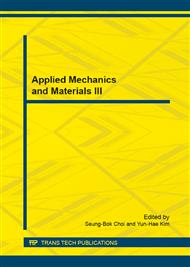p.372
p.377
p.382
p.387
p.395
p.400
p.406
p.410
p.419
Analysis on Thermal Stresses Adaptability to High Grade Asphalt Pavement Structure in Qinghai-Tibet Plateau
Abstract:
Permafrostregions have harsh climate conditions, continuous low temperature, abrupt cooling, large temperature difference, winds, etc. It has an extremely obvious influencetoasphalt pavement structures and materials. Take Lhasa-Gongga airport highway as an example to analyze the low temperature cracking problem of asphalt pavement caused by the climatic conditions. Using finite element method to contrast and analyze the thermal stresses variation of different asphalt layer, and recommend suitable asphalt pavement structure for Qinghai-Tibet plateau permafrost regions.The results indicate that the thermal stresses of asphalt layer gradually reduce along with the thickness direction of structure, moment of maximum and minimum value also been delayed and thermal stresses of base cause is fairly few. It can reduce thermal stresses of base cause and asphalt layer effectively while using the AC-25, and 4cmAC13 + 6cmAC20 + 8cmAC25 is recommended for Lhasa-Gonggaairport highway pavement structure type.
Info:
Periodical:
Pages:
395-399
Citation:
Online since:
January 2015
Authors:
Price:
Сopyright:
© 2015 Trans Tech Publications Ltd. All Rights Reserved
Share:
Citation:


